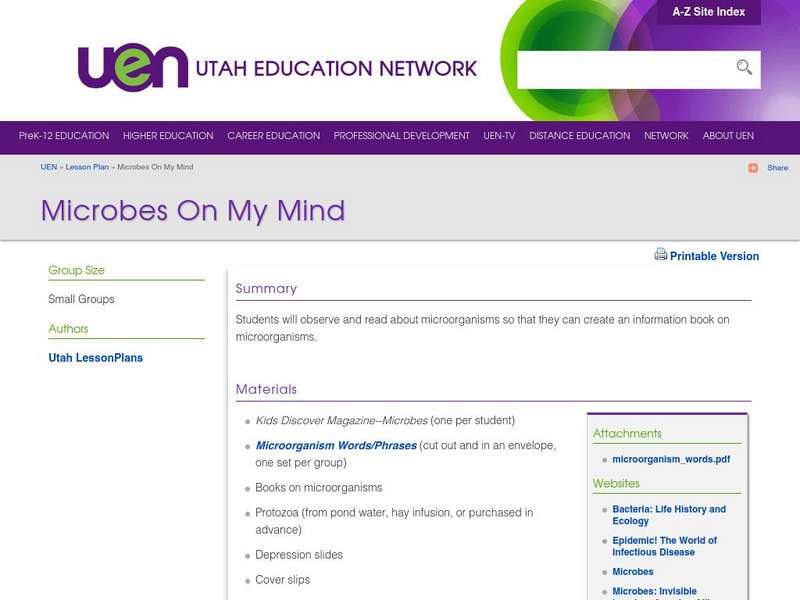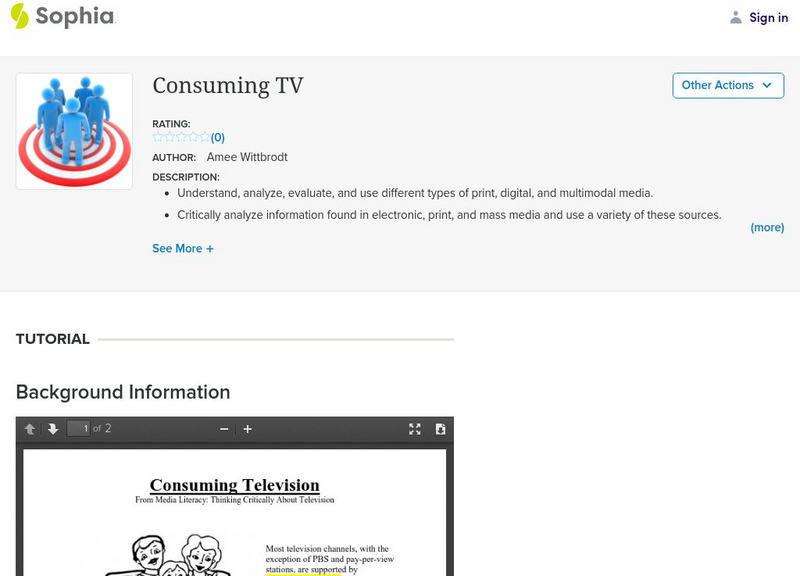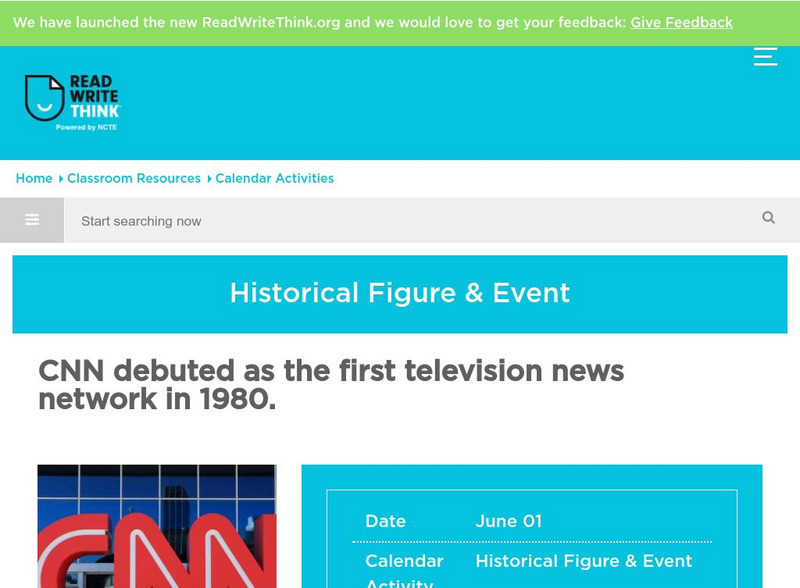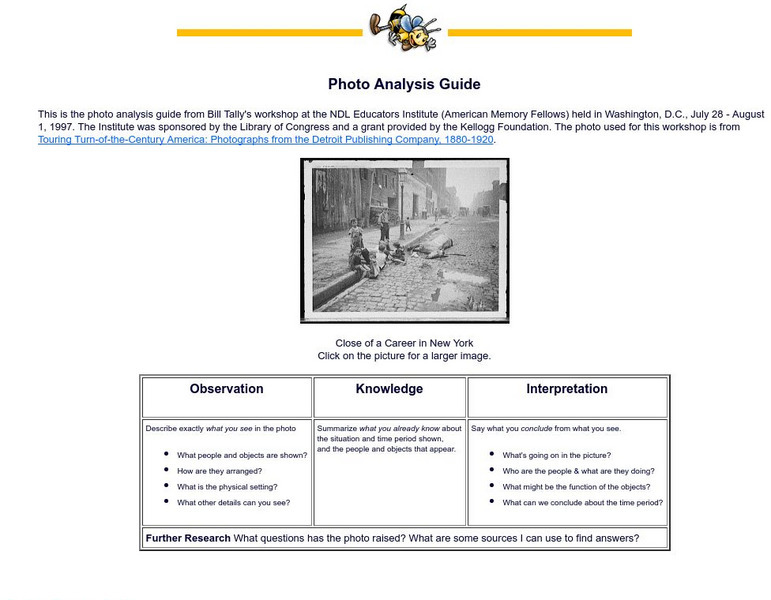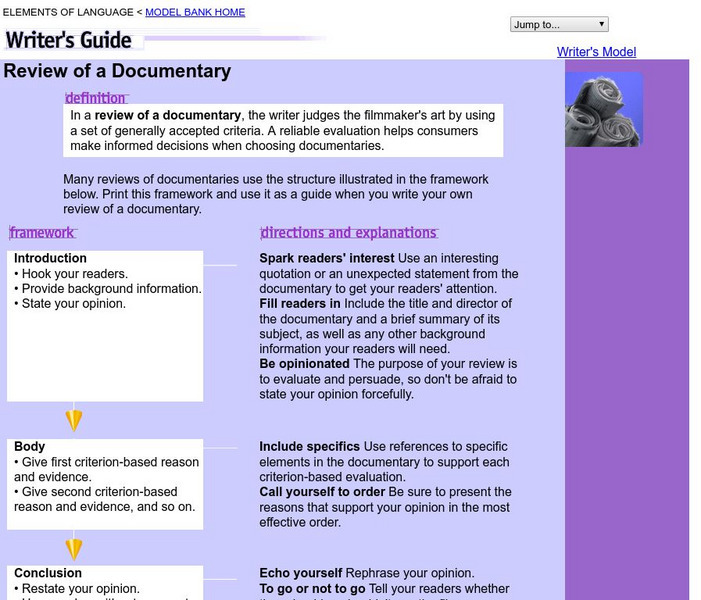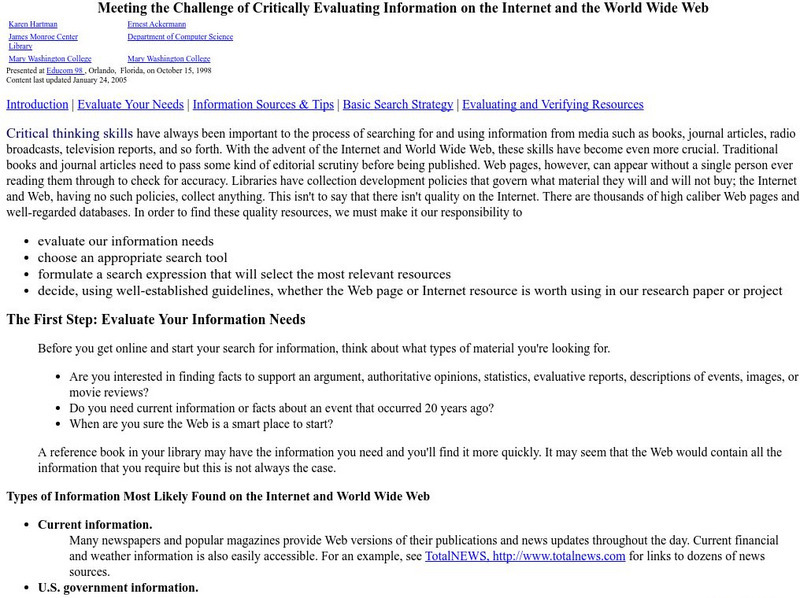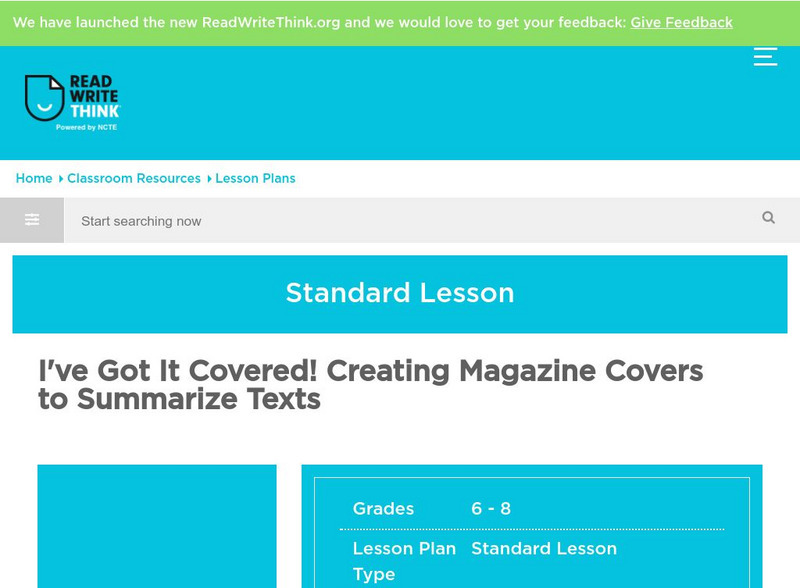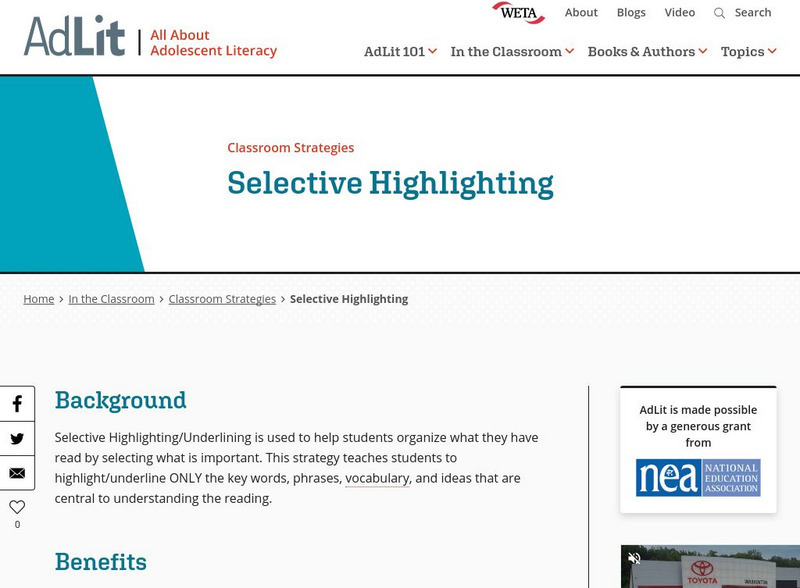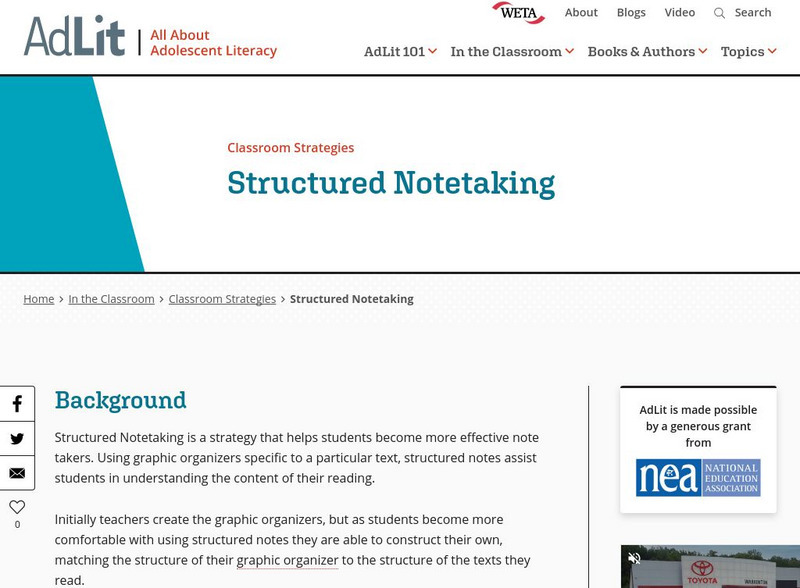Read Works
Read Works: The Eco Pyramid
[Free Registration/Login Required] This passage shares nonfiction information about ecological pyramids. This passage is a stand-alone curricular piece that reinforces essential reading skills and strategies and establishes scaffolding...
Utah Education Network
Uen: Lesson Plan: Microbes on My Mind
A four-day sixth-grade science lesson on the topic of microbes. Students learn information about microbes and their functions through personal observation and several non-fiction texts, some of which are provided.
Sophia Learning
Sophia: Consuming Tv
In this tutorial, students will read about the viewing of television in American households through the reading of a passage and the viewing of a video segment. Students will then engage in answering basic comprehension questions,...
Sophia Learning
Sophia: Determining Your Audience
On this website you will find information, two presentations, and a practice worksheet explaining how to decide the audience of a written piece and how to appeal to an intended or general audience in an original text....
Sophia Learning
Sophia: Bias
Notes introducing bias and demonstrating how to identify slight, moderate, and strong bias in a text. Notes can be both read and listened to.
Georgia Department of Education
Ga Virtual Learning: Informative Speech Critique Sheet (Pdf)
This PDF is a critique form for evaluating informative speeches. SL.9-10.3 Eval Presentation. CCSS.ELA-LiteracySL.3, SL.9-10.3 Eval Presentation
ReadWriteThink
Read Write Think: Cnn Debuted as the First Television News Network in 1980
These lesson plans relate to the gathering and production of news and creating a visual timeline. There are links to other lesson plan ideas, as well as web links, and a brief bibliography. SL.11-12.2 Eval&Integrate sources
Cyberbee
Cyberbee: Photo Analysis Guide
This site is a guide to help students analyze visual media. Further research questions included.
Houghton Mifflin Harcourt
Holt, Rinehart and Winston: Writer's Model: Review of a Documentary
A one-page guide to writing a review of a documentary.
Other
Media Education Foundation: Deconstructing a Video Advertisement [Pdf]
Handout that leads students through an exploration of the visual and audio elements of a video advertisement as well as the effect these elements have on the intended audience and the community as a whole.
Education Development Center
Education Development Center: Tv411: Reading Structure of a News Story
Interactive lesson explains the content and organization of newspaper articles. Includes self-scoring exercises for practicing identifying the five W's (who, what, when, where, and why) in a series of brief news articles and a...
Education Development Center
Tv411: Reading: Parts of a Newspaper
A series of three activities help readers become familiar with parts of a newspaper, from sections to headlines and captions.
Other
Webliminal: Critically Evaluating Information on the Internet
This site gives excellent information on why it's important to evaluate the content of everything you find in cyberspace, and also tells you how to do so. It also contains information about using search engines effectively and how to...
Other
Center for Media Literacy: What Is "Critical" Viewing?
Understand the term "critical viewing" as it relates to visual literacy. Learn how to assess the media around you in order to become more knowledgeable and not easily manipulated by what you see.
Tech Target
Whatis.com: Infomercial
This site has the definition of "Infomercial," and includes explanations of the infomercial equivalent in print media and on the internet.
Other
Smekens: Integrate Information Across Diverse Media Formats
Read about strategies to help students integrate information across diverse media formats. Includes video. [4:18]
ReadWriteThink
Read Write Think: Creating Magazine Covers to Summarize Texts
In this lesson, students will examine the ways in which a magazine cover's headlines and graphics express the main ideas of its articles. They will then use an interactive tool to create covers that summarize chapters of informational...
Other
Dade Schools: John Ferguson: Informational Text Features
A table explaining different text features including graphics, visuals, and sections found in text.
SMART Technologies
Smart: Propaganda Techniques
In this lesson students learn what propaganda is and how to identify it. Students have the opportunity to create a video of propaganda.
Alabama Learning Exchange
Alex: Movie Madness
This language arts projects motivates students through being a movie-based project. This instructional activity will have a duration of five days. The students will view a movie of their choice and analyze the movie to complete a chart...
Alabama Learning Exchange
Alex: Whose Voice Guides Your Choice?
In this one-two week unit, students explore the role media has in influencing public opinion. Students analyze advertising in print, video, and online formats. An optional visit to the Museum of Television and Radio via distance learning...
ReadWriteThink
Read Write Think: Inquiry on the Internet: Evaluating Web Pgs for Class Collection
A four-session lesson plan that leads to a class collection of resources is a solid introduction to both searching skills and evaluation. Could be used with any number of subject areas.
AdLit
Ad lit.org: Classroom Strategies: Selective Highlighting
Selective Highlighting/Underlining is used to help students organize what they have read by selecting what is important. This strategy teaches students to highlight/underline ONLY the key words, phrases, vocabulary, and ideas that are...
AdLit
Ad lit.org: Classroom Strategies: Structured Notetaking
Structured Notetaking is a strategy that helps students become more effective note takers. Using graphic organizers specific to a particular text, structured notes assist students in understanding the content of their reading.



